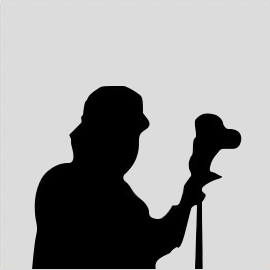0 Likes
麥理浩徑(英文:MacLehose Trail)是香港最早啟用的一條長途遠足徑,於1979年10月26日啟用,以時任香港總督麥理浩命名、並且由其本人主持剪綵開幕。麥理浩徑是香港最長的遠足徑,全長100公里,共分10段。麥理浩徑共有200支標距柱,約每500米一支。它貫穿了西貢東、西貢西、馬鞍山、獅子山、金山、城門、大帽山及大欖郊野公園,以屯門為終點。大部分的麥理浩徑都是依山勢而建。1979年初,第25任港督麥理浩下令駐港英軍開闢此徑,只花了約九個月。麥理浩徑啟用初期,主要用作訓練英軍。據說當時的英軍必須在24小時內走畢全程,最快的尼泊爾軍只用了12小時多。1984年後,麥理浩徑的民用性質才日益擴大。之後陸續開闢非軍事的衛奕信徑、鳳凰徑、港島徑,以及多條郊遊徑。1979年3月29日,即麥理浩徑落成前約七個月,麥理浩到北京會見鄧小平,得知中國一定會收回香港,香港問題正式出現。有人認為麥理浩徑的開闢和英國對香港前途憂慮有關。麥理浩徑是有意識地將新界東西及九龍半島以北的各個制高點,包括西灣山、牛耳石山、雞公山、馬鞍山、獅子山、大帽山等連成一線,即把新界切成兩半,而第五、六段更有二戰時留下的許多仍可使用的碉堡和軍事建設。因此有人推測麥理浩徑是一條軍事防線。邊界是第一線、麥理浩徑是第二線、維港是第三線。麦理浩径(MacLehose Trail)是香港西贡区东部一条贯穿郊野公园的远足径,于1979年10月26日启用,以当时港督麦理浩爵士命名、并由麦理浩本人主持剪彩。麦理浩径是香港最长的远足径,全长100公里,共分10段。麦理浩径共有200支标距柱,约每500米一支。它贯穿了西贡东、西贡西、马鞍山、狮子山、金山、城门、大帽山及大榄郊野公园,以屯门为终点。大部分的麦理浩径都是依山势而建。
...





Overview and HistoryHong Kong sits on the south coast of China, on the Pearl River Delta. It's got a population of more than seven million people and is one of the most densely populated places on earth. It also appears to be putting into place the template for population management, which cities around the world will be implementing as soon as they can afford it. More on that later.Archaeological evidence dates human activity beneath present-day Hong Kong back to the stone age. The area was first settled by people from the mainland during the Han dynasty, around the beginning of the common era (the P.C. term for when B.C. changed to A.D. Whoa!)For hundreds of years, Hong Kong was a small fishing community and haven for travelers, with a few pirates here and there. Then whitey showed up.Western influence reached China at the beginning of the 15th century, when all those great explorers in boats were cruising for loot in strange and mysterious places. Tea and silk were the commodities connecting eastern Europe to China, and Hong Kong was known as a safe harbor through which to pass. When you're carrying the Queen's tea, it's especially important to avoid ARRRRRRguments with pirates. Hyuk hyuk hyuk.Seriously folks -- in the eighteenth century Britain was doing a booming business with China, offering Indian opium to balance their extensive purchases of fine porcelains and everything else. The opium was ordained to be for medicinal purposes only, of course.Well, as you may imagine, the Chinese got sick of opium fiends junking up the place, so they attempted to stop the British suppliers, to no avail. The Opium Wars resulted and ended with China ceding Hong Kong to the British, in fear of their massive naval power. This took place in the year 1841.Colonization soon followed, Hong Kong shot up in value as an international port, and its population increased dramatically. In 1898 Britain acquired additional territories on a 99 year lease -- expiring in 1997. Does that year sound familiar? Read on.In the 20th century Hong Kong changed hands several times. The British surrendered it to Japan during World War Two, then took it back after Japan's defeat, then gave it to China later. Immediately following the war, Hong Kong served as a safe haven for hundreds of thousands of Chinese refugees, while the Chinese National Government was losing its civil war against communist leadership.The population of Hong Kong exploded as corporations seeking to escape Chinese isolationism arrived and set up shop. Cheap labor in the textile and manufacturing industries steadily built up the economy and ensured foreign investment. By the end of the 20th century Hong Kong had become a financial mammoth offering banking services to the world.In 1997 Hong Kong returned to Chinese rule with a few stipulations in place to guarantee its economic autonomy, as much as possible. The phrase "one country, two systems" was coined by the Chinese to describe the relationship between the mainland and Hong Kong.Getting ThereWell, where do you want to get to from the Hong Kong International Airport? There are ferries servicing six mainland ports in the Pearl River Delta Region. Airport Express Railway connects directly to downtown Hong Kong, and it has been rated the best airport in the world multiple times.The Airport Express Railway will get you into Hong Kong in about an hour, for $100. Public buses cost $10 and take a little longer. For direct service to your hotel you can take one of the hotel's private buses ($120+) or a taxi ($300+). As you can see, waiting time is optional for those who can afford it.Here's a little blurb on travel times, with further information for access to nearby cities (cross-boundary transport).TransportationGrab an Octopus card when you arrive. Octopus is the world's first electronic ticket-fare card system and the Hong Kong public transportation system is the world leader in people-moving. 90% of Hong Kongers get around on public transportation.Octopus covers the Airport Rail line, buses, ferries, the rapid-transit MTR network, supermarkets, fast food outlets, phone booths... It's how to get around the cashless economy.Nevermind the microchip built into it, you'll get used to having one of those on you at all times -- and soon they'll be internal! What do I mean? Many schools in Hong Kong even use the Octopus card to check attendance, because you read the card's data with an external scanner from a distance. This will the global norm soon. What if that chip is installed in your body? It's in the works baby!The hilly Hong Kong terrain also demands some special modes of transportation. If you've been to Pittsburgh, you may have some idea of how cool it is to ride a cable car up the side of a mountain, overlooking a majestic harbor and city. Multiply that by about ten thousand and you've got Hong Kong: vertical-travel trams, moving sidewalks, and the world's longest outdoor escalator system.People and CultureThe local currency is the Hong Kong dollar (HKD) which is pegged to the U.S. dollar. Official languages are Chinese and English. You're on your own, baby! Dive into the swarming, throbbing, pulsing, crawling and teeming mix!Things to do & RecommendationsThe Peak Tower and its shopping Galleria are the biggest tourist attraction in Hong Kong so don't miss it.Cool off in the Kowloon Park public indoor swimming pool!After that, go see what's happening at the Hong Kong Fringe Club, a non-profit organisation which puts together exhibitions for international artists and performers.Organize sports fans flock to the Hong Kong Stadium, but there's good news for disorganized sportistas too -- Mountain biking is now legal in the parks! Have at it, baby!All this excitement is going to make you hungry. Springtime is traditionally the time to celebrate seafood, summer is for fruits, and winter steams with hot pot soups to keep you warm.The best thing to do is go and find some dim sum. Dozens of plates of tasty small items, sort of like sushi but it's cooked, and the varieties are endless.Since you won't be able to walk down the street without complete and total sensory overload, I'll just whap in the Hong Kong tourist board's guide to dining and leave you to your intuition.Good luck, take it slow and above all -- DON'T SPIT OUT YOUR CHEWING GUM ON THE SIDEWALK. Gum is legal but there's a $500 fine for intentional littering. Enjoy!Text by Steve Smith.